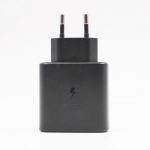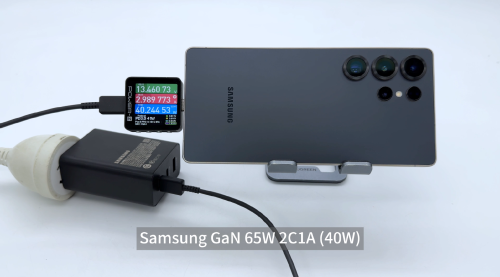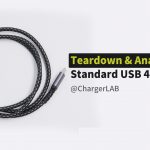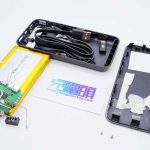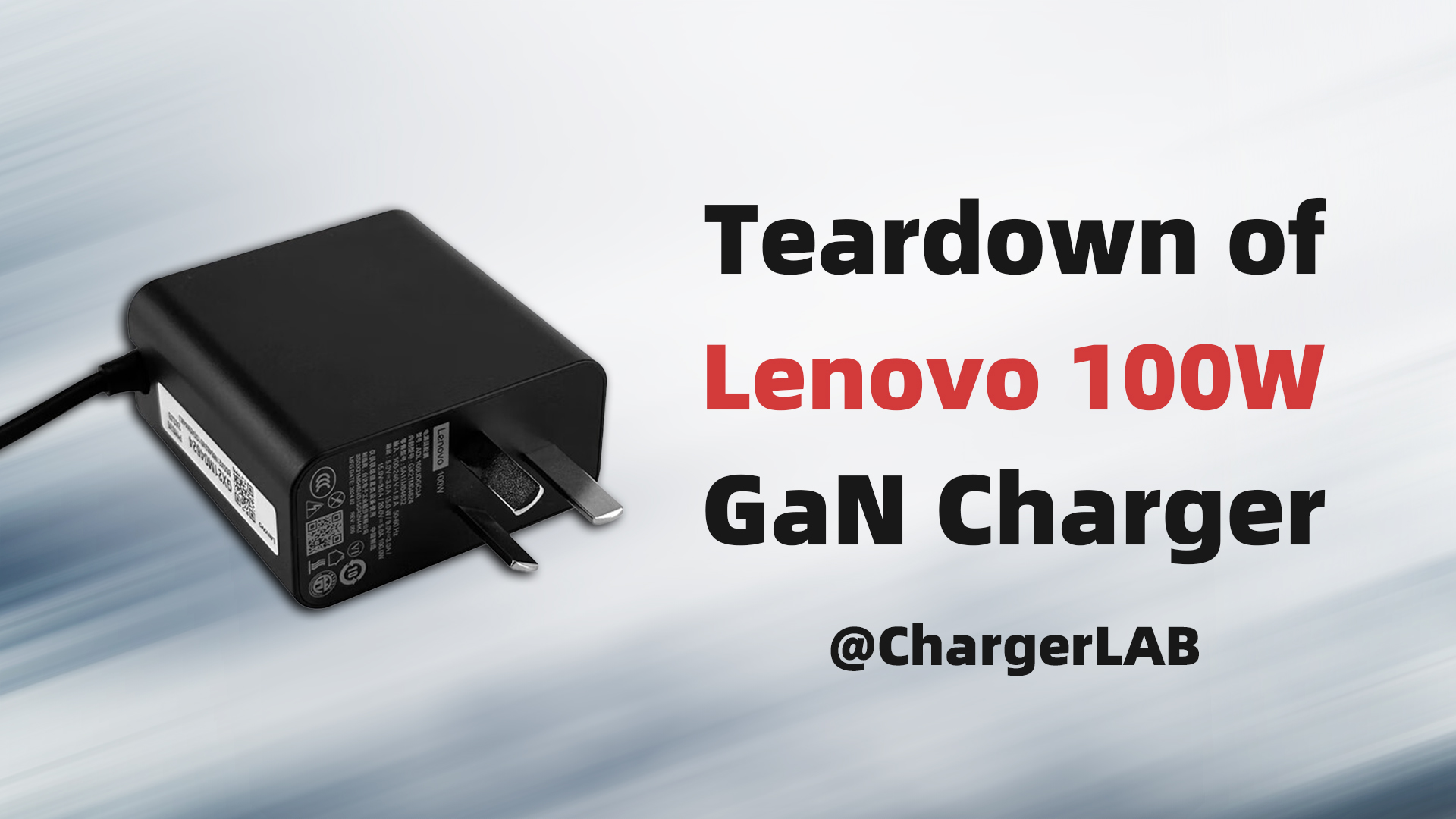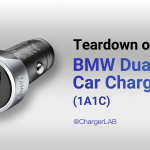Finally. The most anticipated single port charger is ready for our teardown. It's not all about the 45W output - Oppo has already shipped a 65W GaN charger with its flagship. It's the industrial's most advanced USB-PD PPS support that interests us. Welcome to our teardown of the Samsung 45W USB-C PD Charger EP-TA845 (EU Version).
I Design
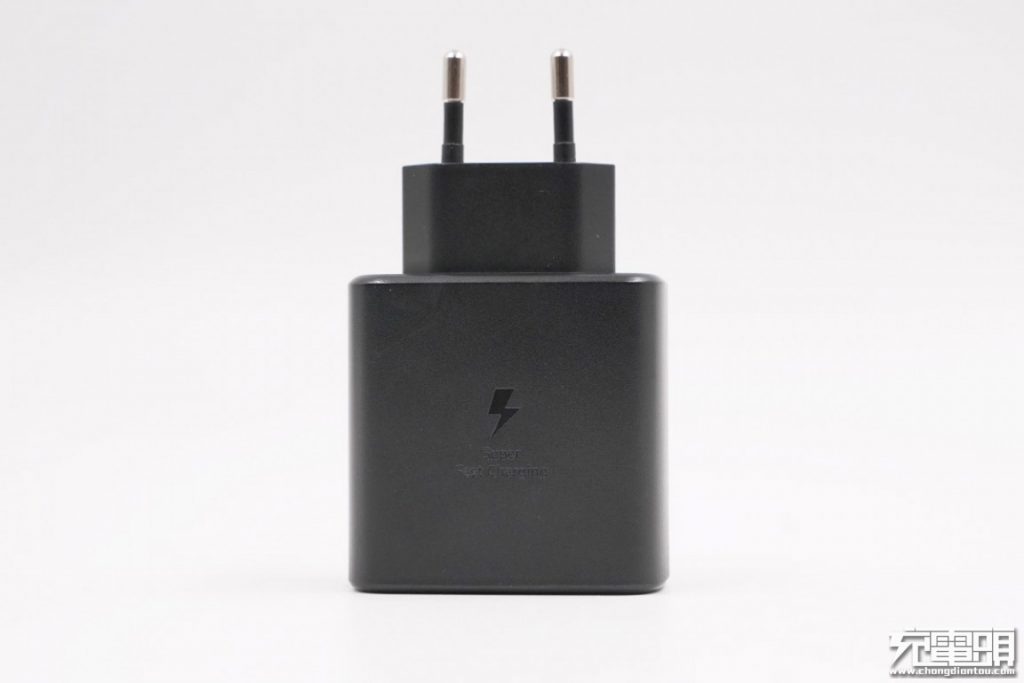
Our unit is an European version. It has a matte finish and a familiar shape of Samsung's charger family, only chubbier. Engraved Samsung Super Fast Charging logo in the center.
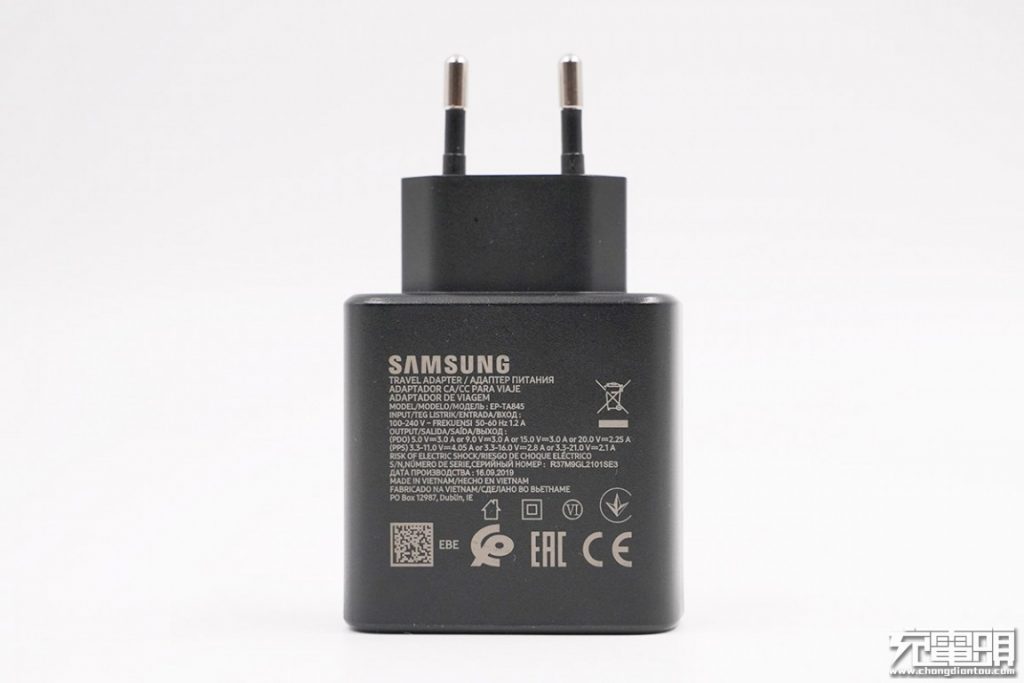
Specifications on the back.Model: EP-TA845Input: 100-240V~50/60HZ 1.2AOutput: (PDO) 5V/3A, 9V/3A, 15V/3A, 20V2.25A; (PPS) 3.3-11V/4.05 A or 3.3-16V/2.8A or 3.3-21V/2.1AMade in Vietnam. CE, EAC, and Moroccan CP certification.
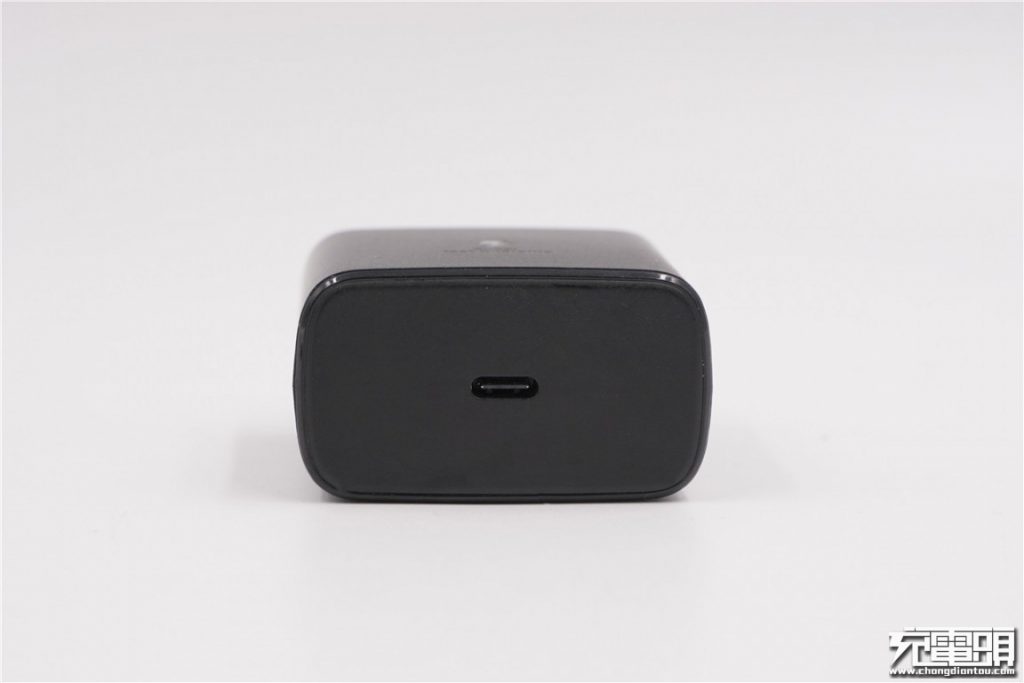
A single USB-C port. The output panel also features a matte finish.
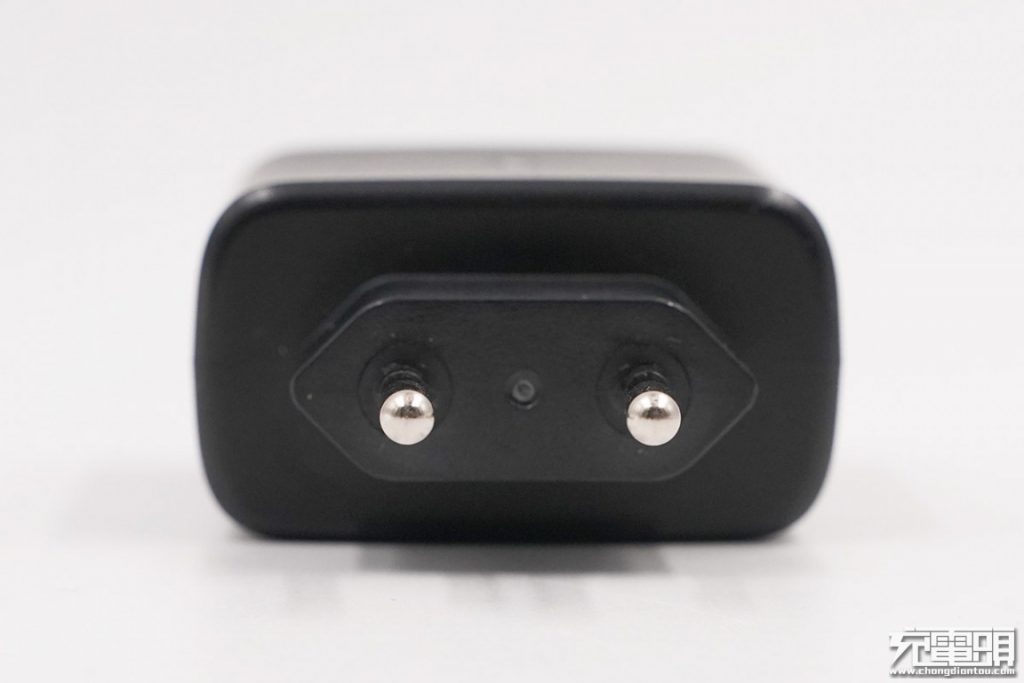
European plugs.
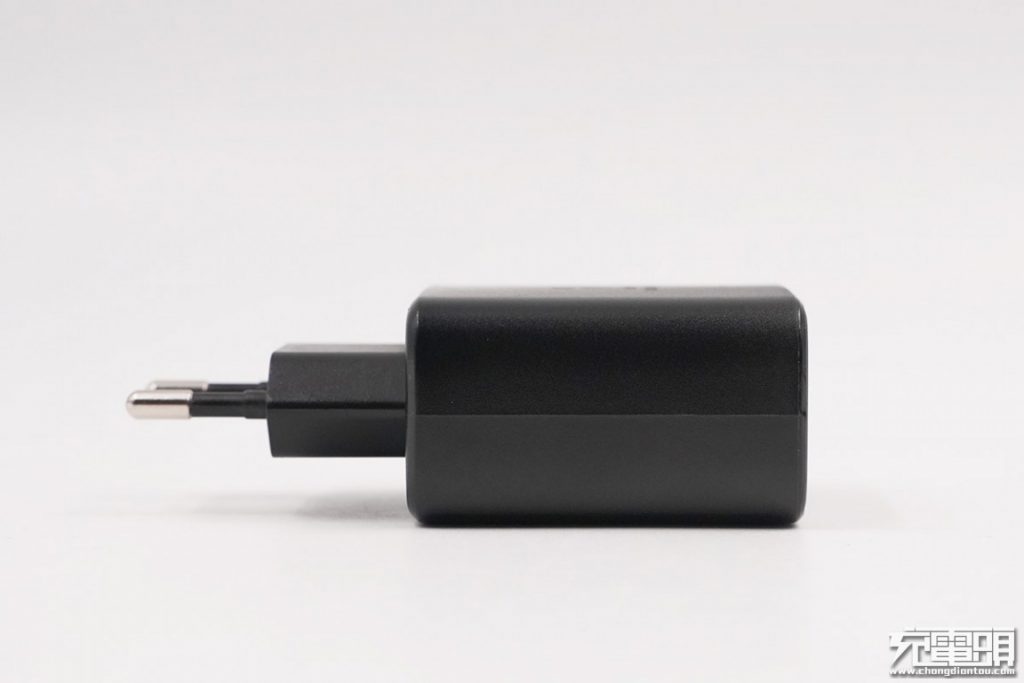
There is a mould line on the side of the outer casing. For $50, it could use more polishment.
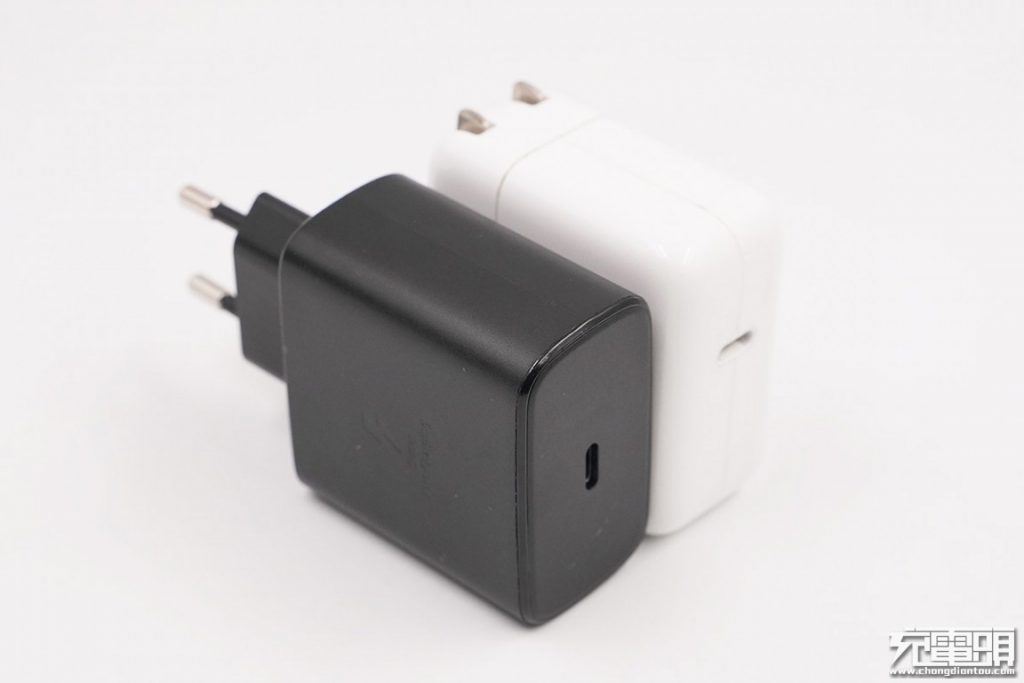
Compared to Apple's 30W PD charger.
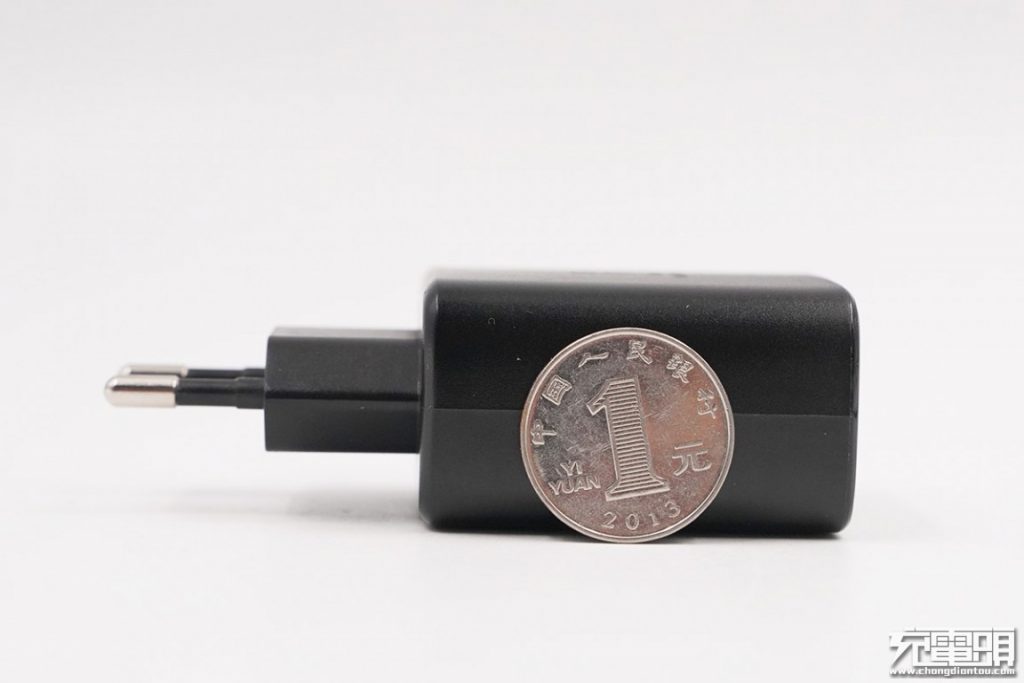
Dimension: 53.1 x 30.1 x 85.9mm (2.1 x 1.2 x 3.5 in). Weight: 120.42g / 4.25oz.
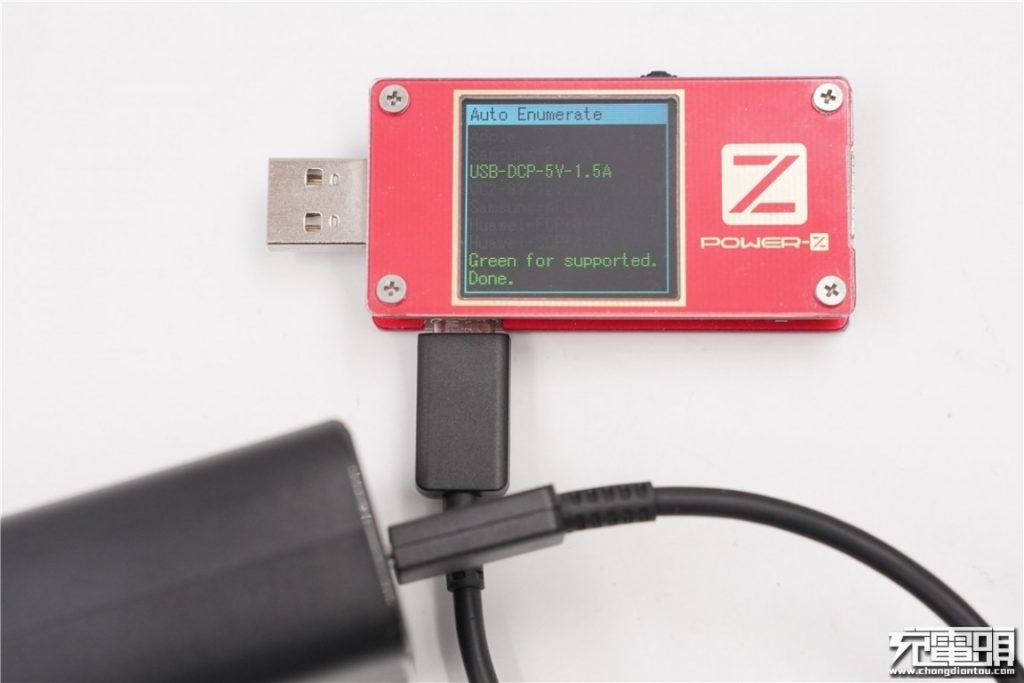
Using the ChargerLAB POWER-Z KT001 USB tester, we can see it supports USB-DCP protocol only.
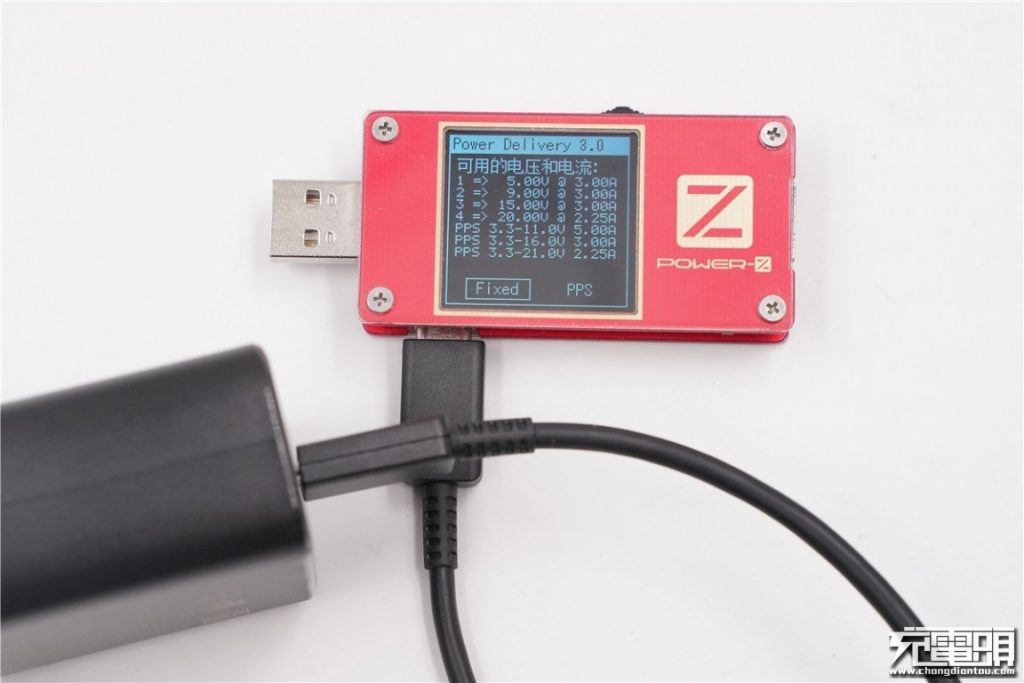
It supports PDOs at 5V/3A, 9V/3A, 15V/3Aand 20V/2.25A; PPS at 3.3V-11V/5A, 3.3V-16V/3A, and 3.3V-21V/2.25A. It is the most advanced PPS charger.
II Teardown
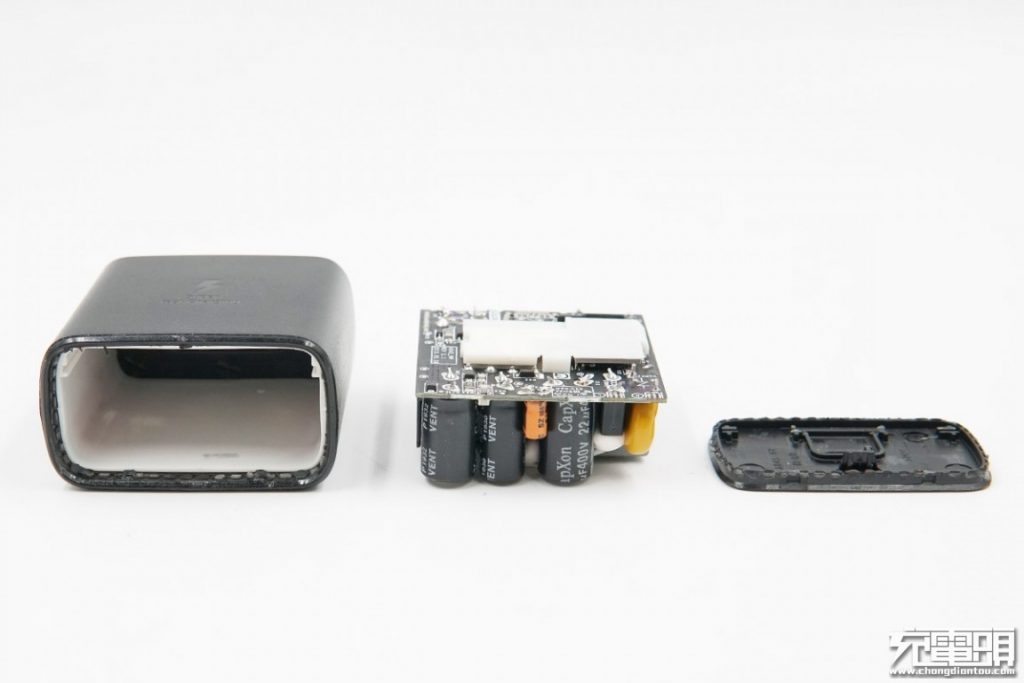
Pry open the output panel, and we can take out the internals without causing damage to the casing. There is a white plastic inner shell inside the outer casing.
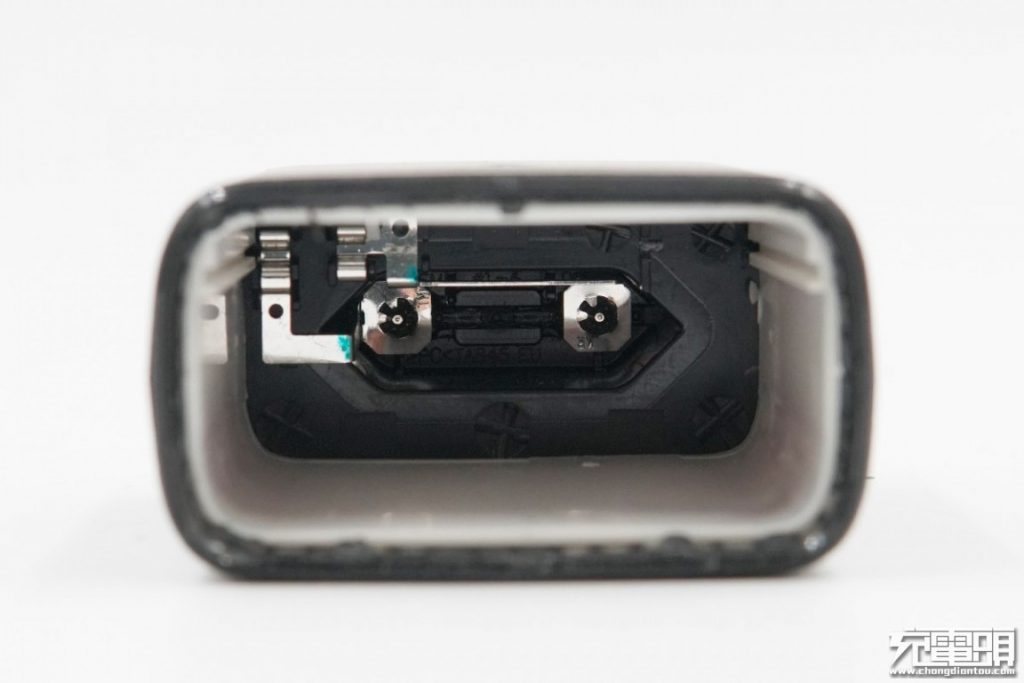
The pins inside the housing and the PCB board use contact connection.
There is a copper foil between the casings for better heat dissipation.
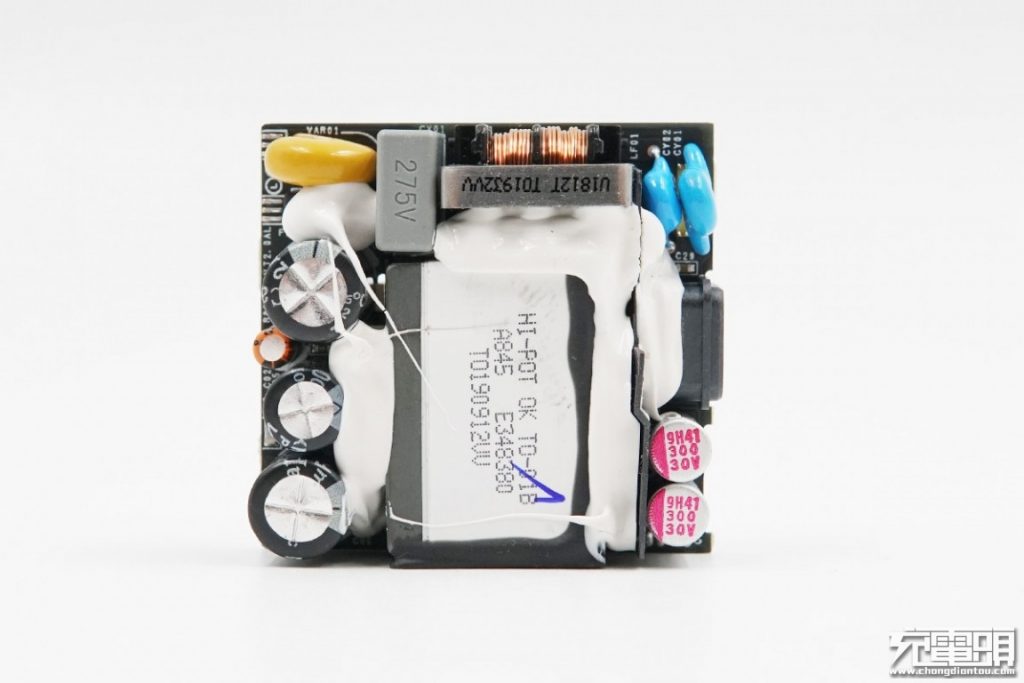
A very neat layout. On the left side of the transformer are input filter capacitors. On the top left are a safety X capacitor and a common mode choke. On the right side are the USB Type-C port and two solid capacitors. The components are glued for structural rigidity.
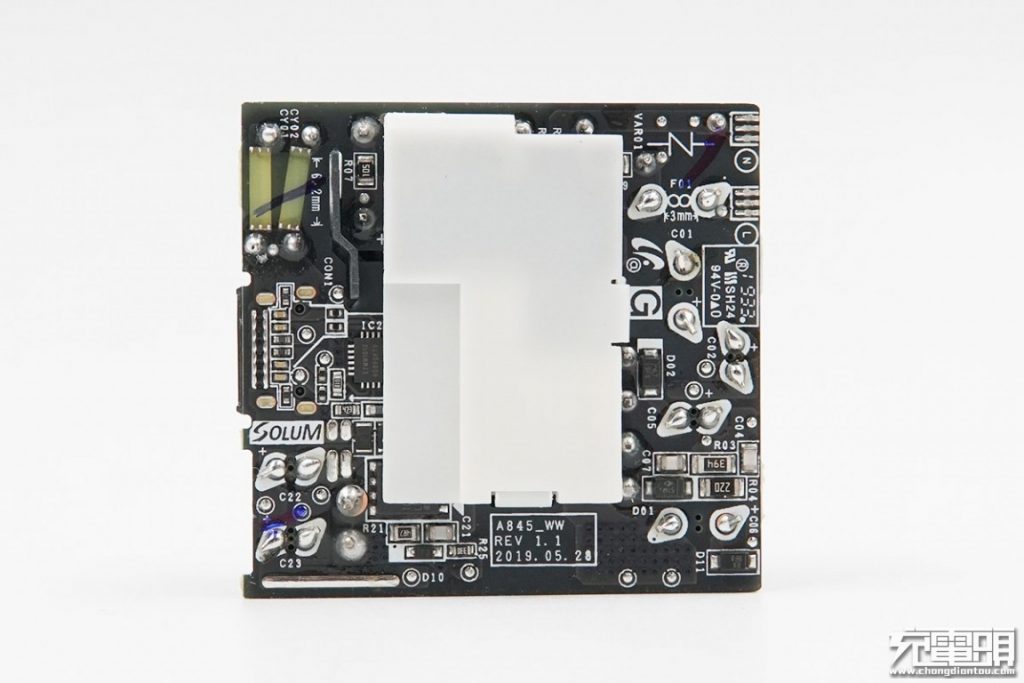
There is a white plastic plate on the back of the PCB.
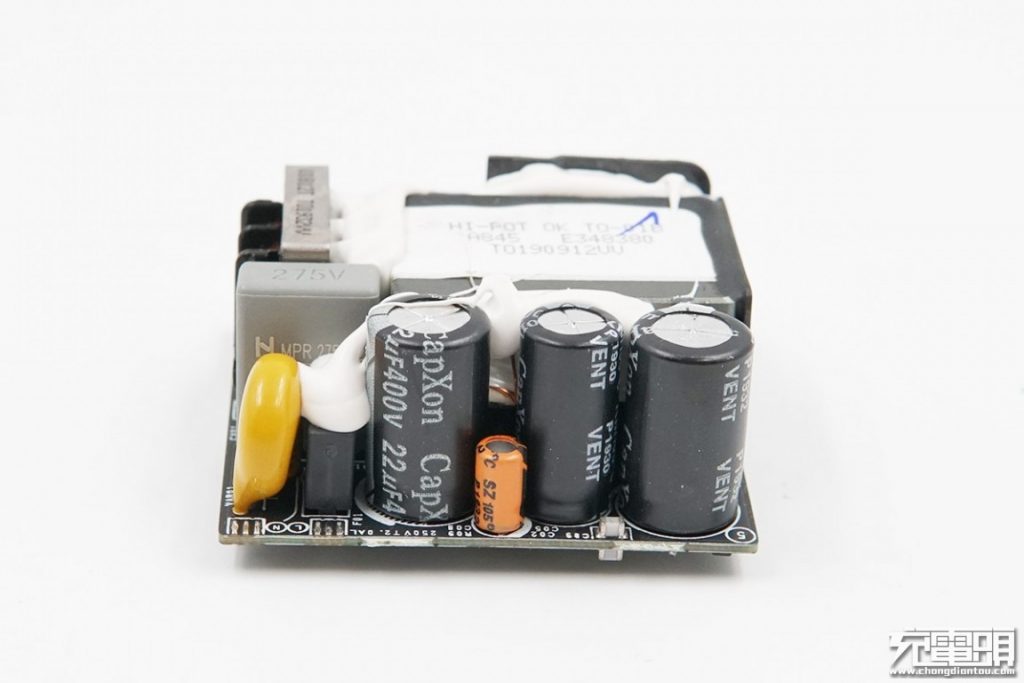
On the input side, from right to left, there are three neatly arranged primary side filter electrolytic capacitors, an orange PWM chip power supply capacitor, a safety X capacitors, and a yellow varistor.
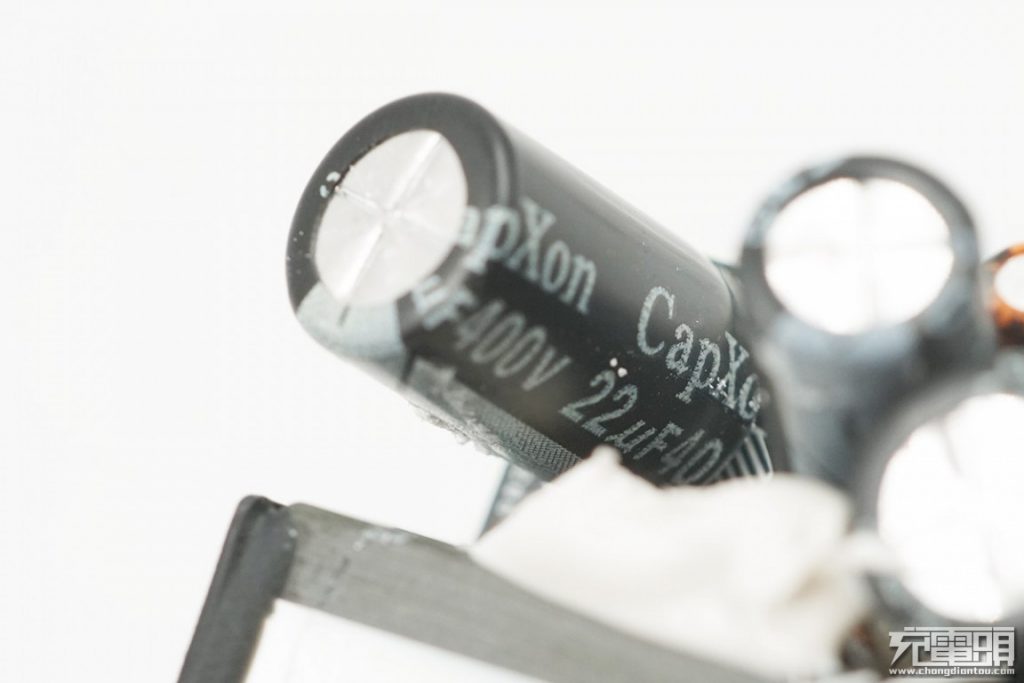
Two larger primary side filter electrolytic capacitors are from CapXon, specification 400V 22μF.
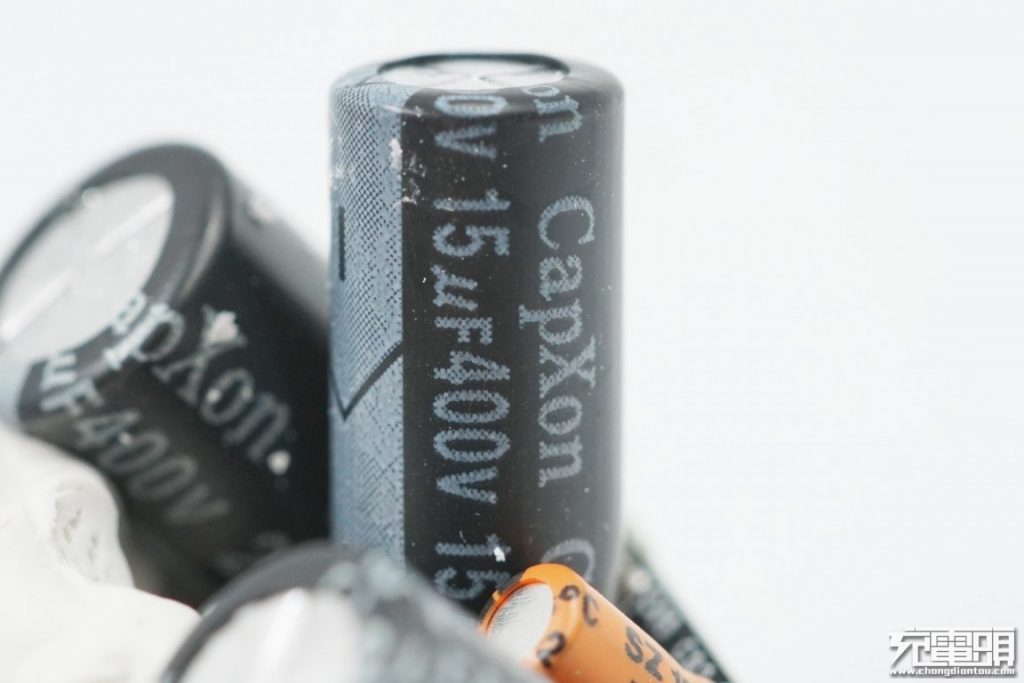
A smaller electrolytic capacitor in the middle, also from CapXon, specification 400V 15μF, and the three capacitors work in parallel.
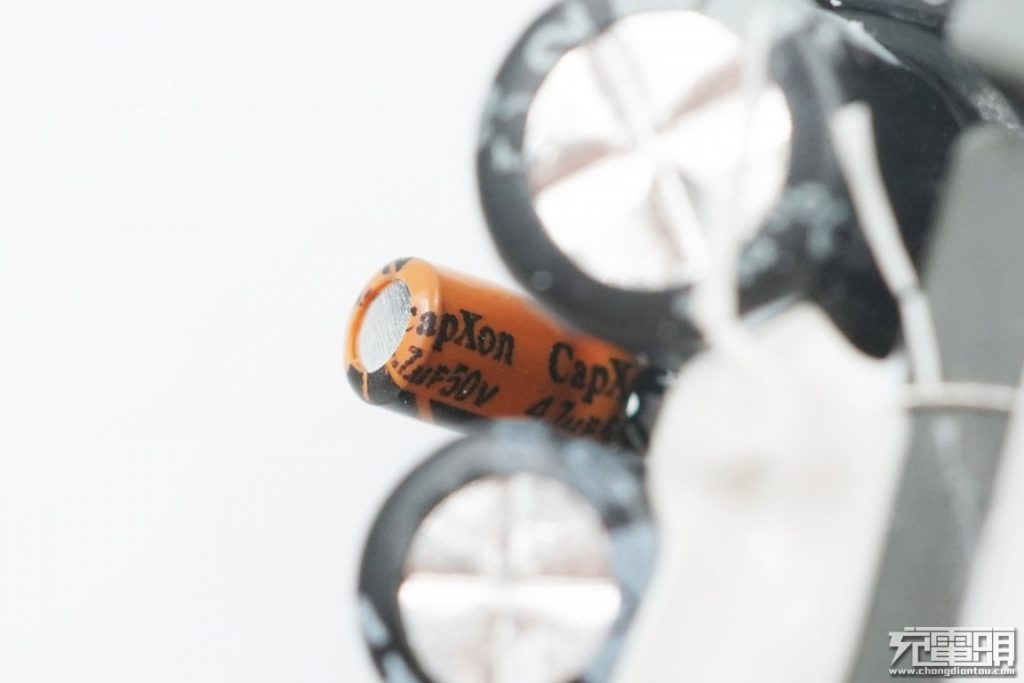
The PWM main control chip is also from CapXon, 50V 4.7μF.
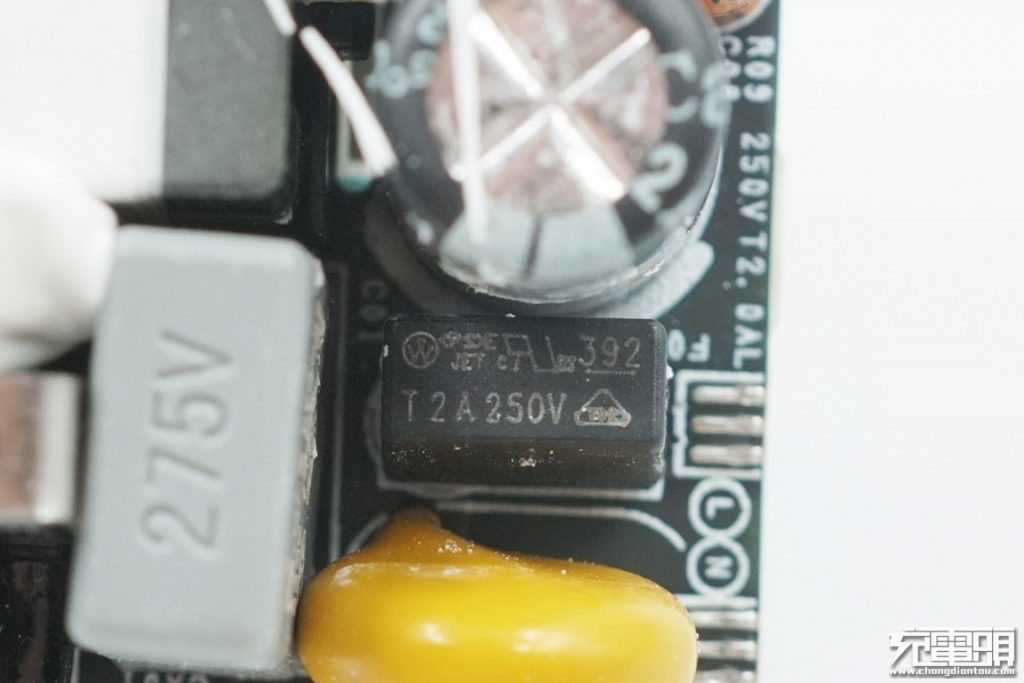
A time-delay fuse, size 2A 250V.
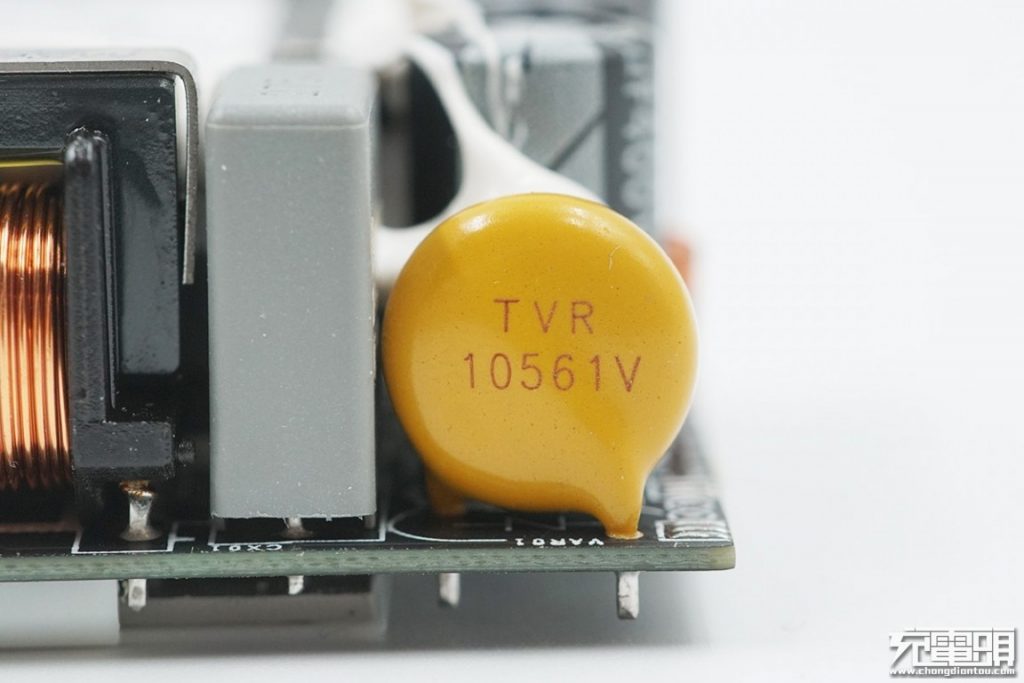
The TVR10-V series varistor turns on the fuse when the AC input is overvoltage, avoiding damage to the electrolytic capacitors.
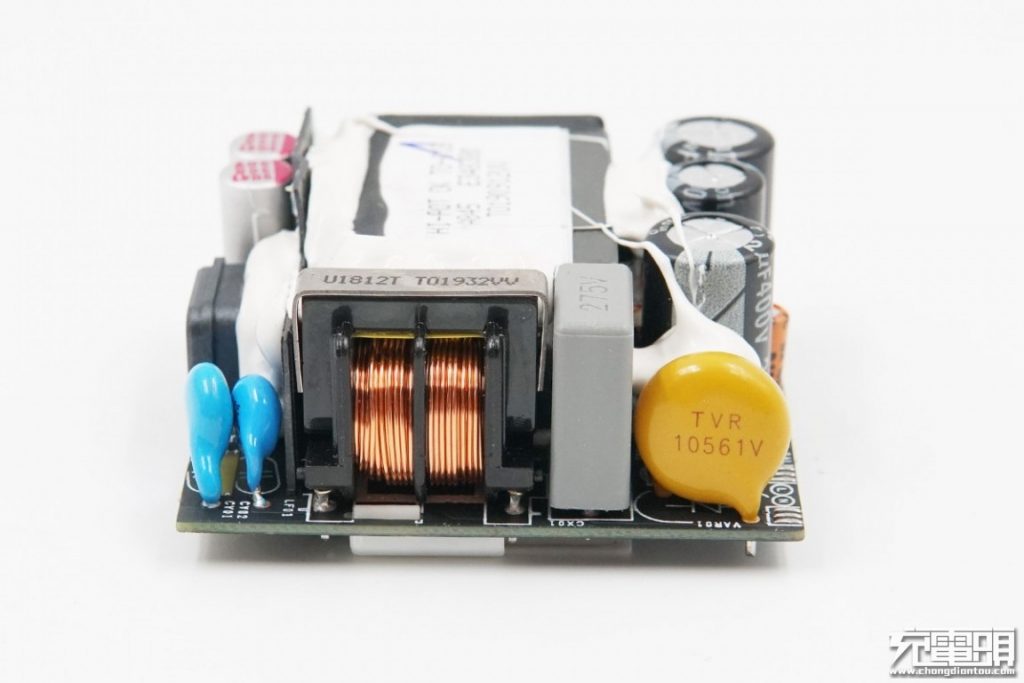
Two output anti-interference capacitors, a common mode choke, and a gray X capacitor on the right.
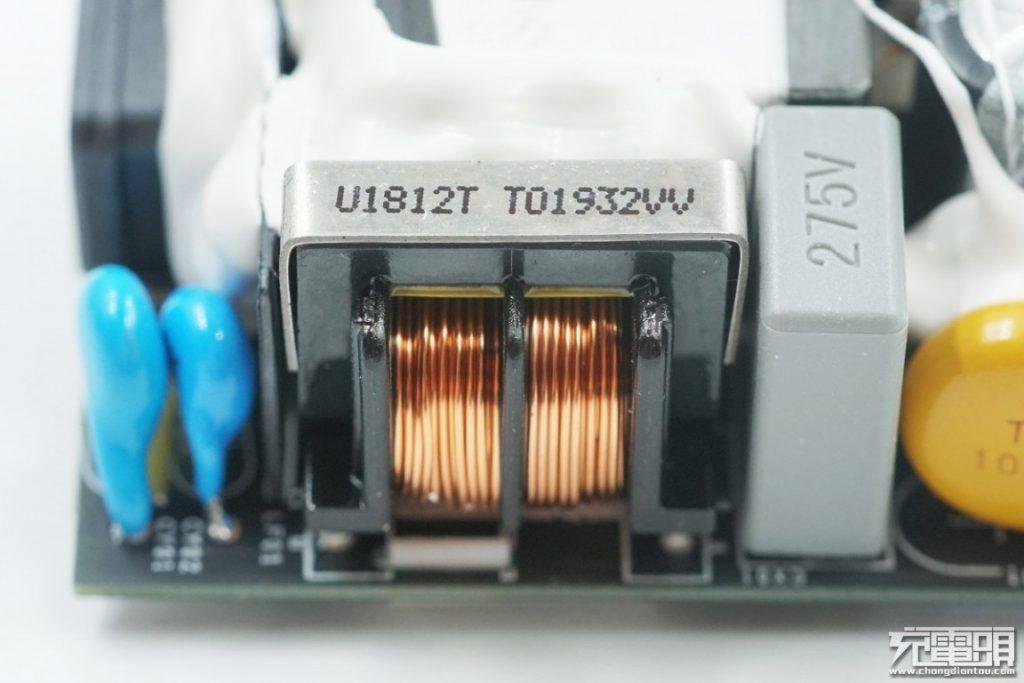
Close-up of the common mode choke which is more complicated than conventional ones that we've seen inside other chargers.
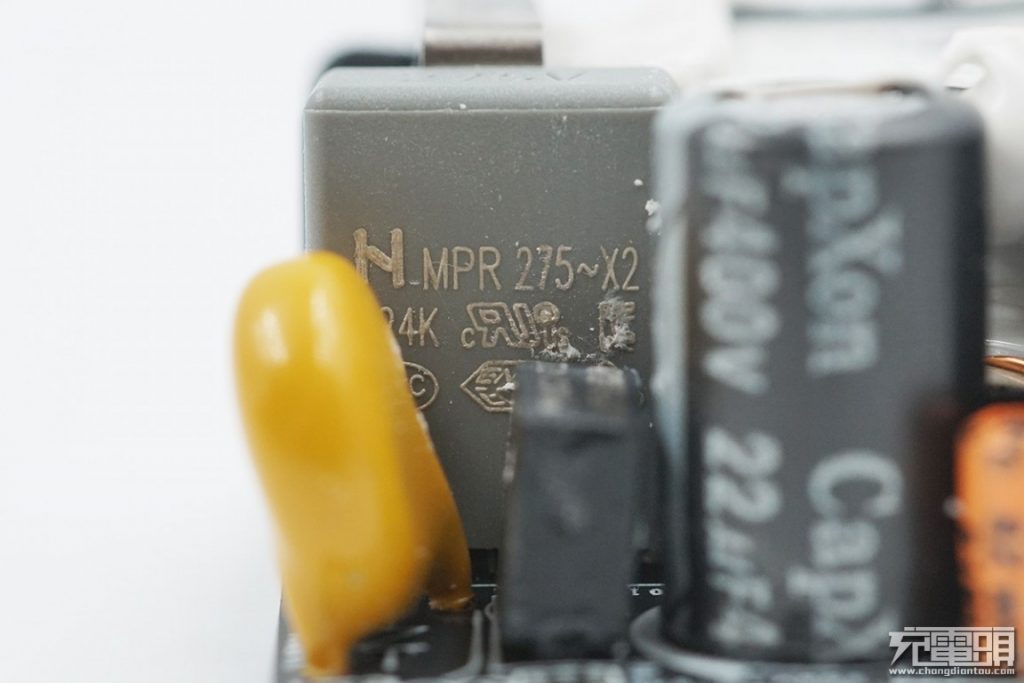
A grey safety X2 capacitor with a capacity of 0.22μF and 275VAC rated voltage.
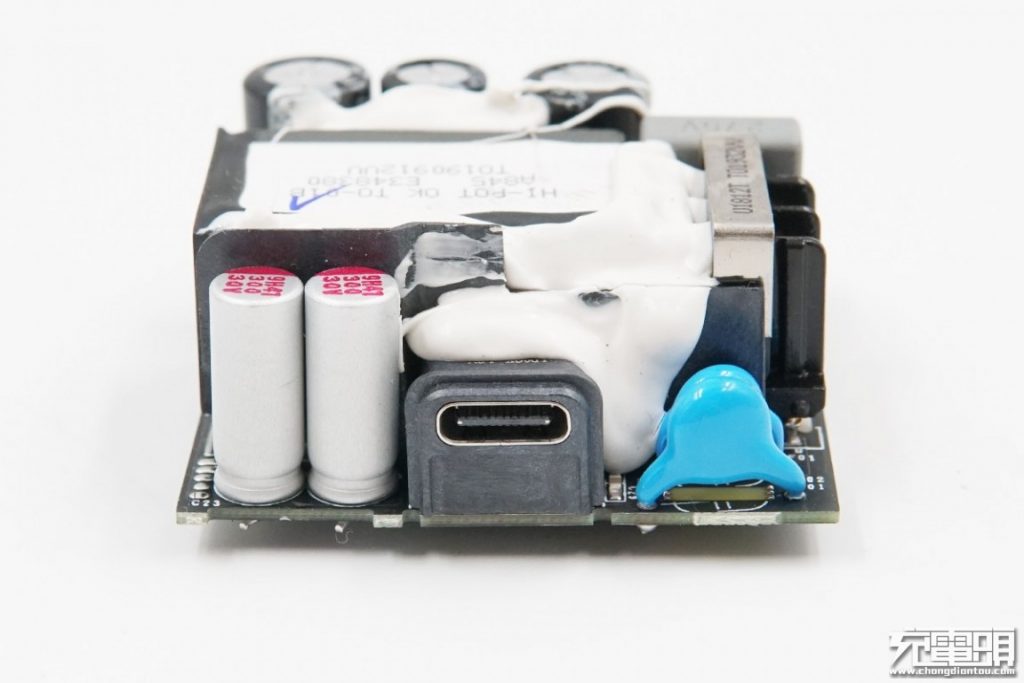
The output side uses two solid capacitors for filtering. The center is a custom USB-C port with a black rubber core. Two blue Y capacitors are connected in parallel, and a plastic insulation board is placed between the transformer and the secondary components.
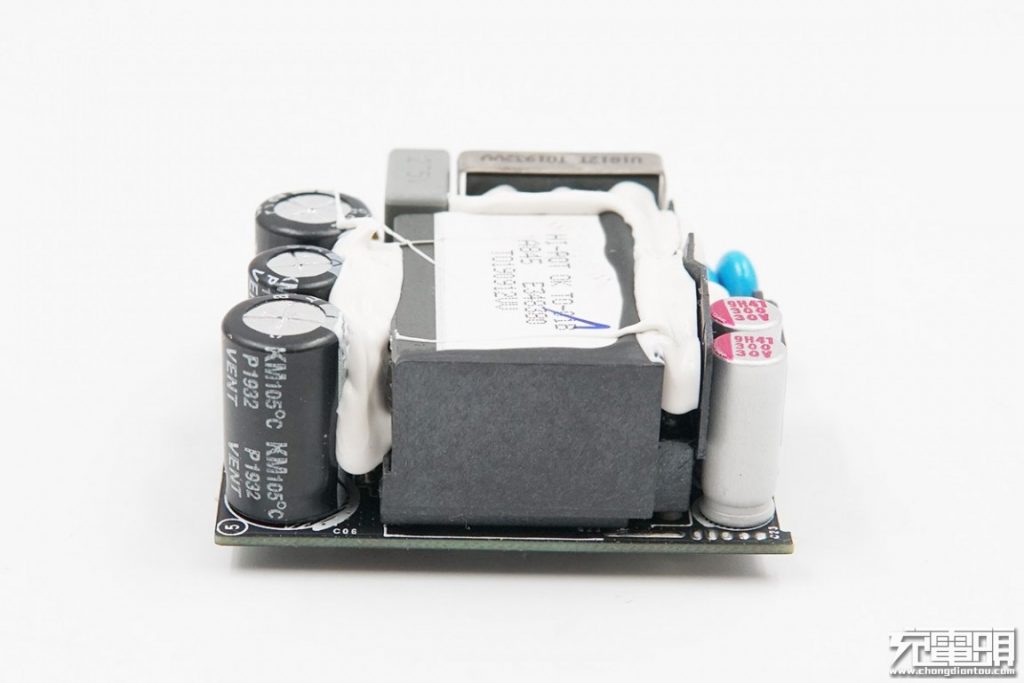
Sideview of the PCBA.
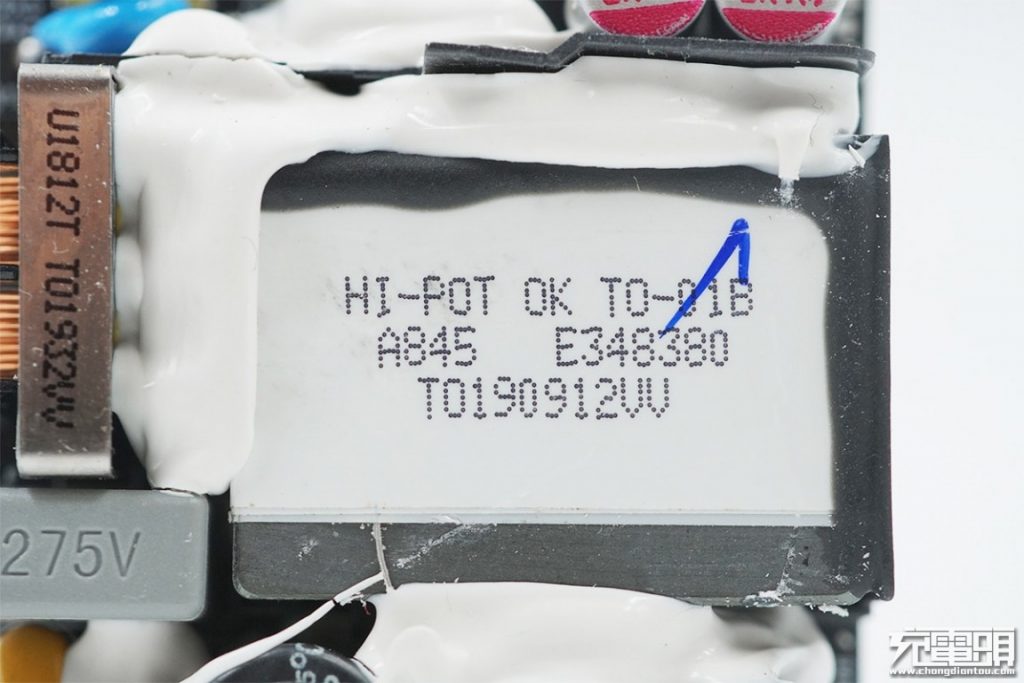
The transformer is wrapped by white Mylar tape, and it has passed the HI-POT high-voltage test. The core is grounded.
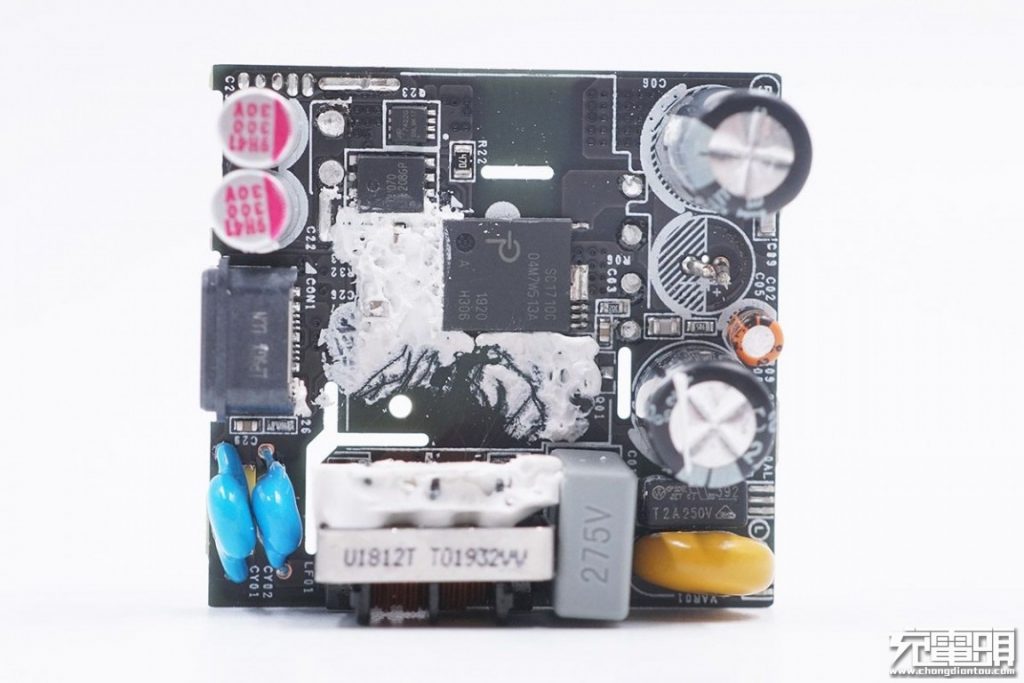
Remove the transformer reveals the main controller chip and two MOSFETs.
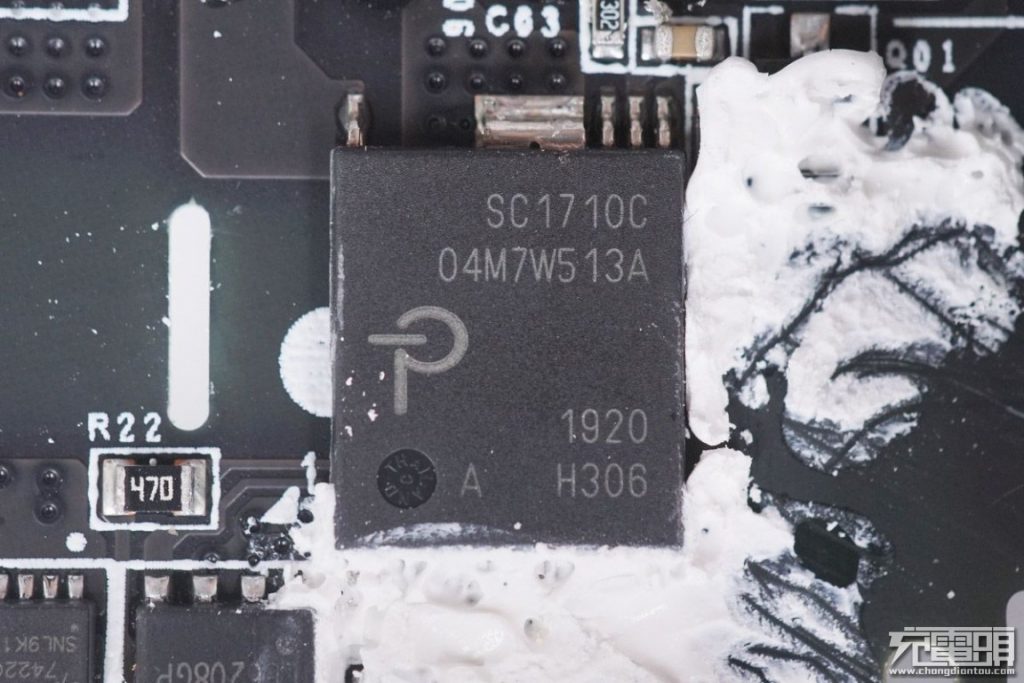
The main controller chip of the charger is an SC1710C, which is a Samsung custom chip by PI, belonging to PI's InnoSwitch3-Pro family. The chip has a built-in primary side PWM controller, a high-voltage switch, and a secondary synchronous rectifier controller.
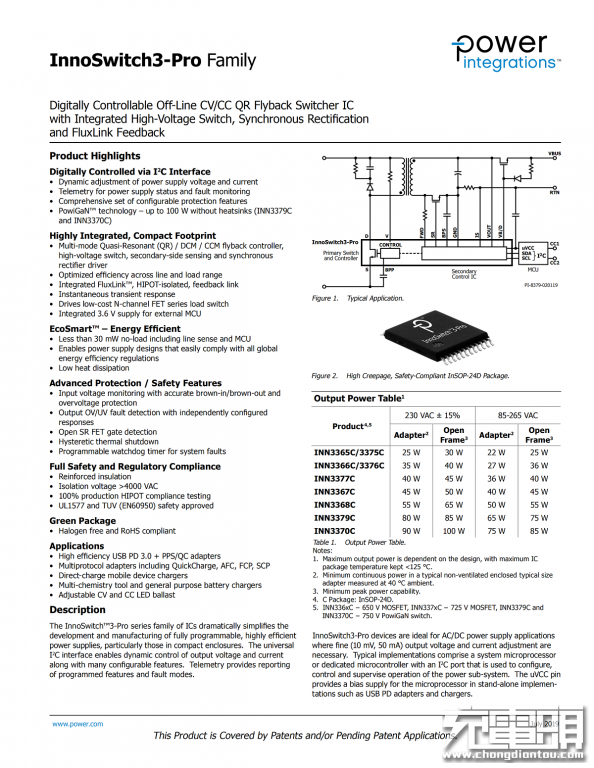
Detailed specifications of the PI InnoSwitch3-Pro.
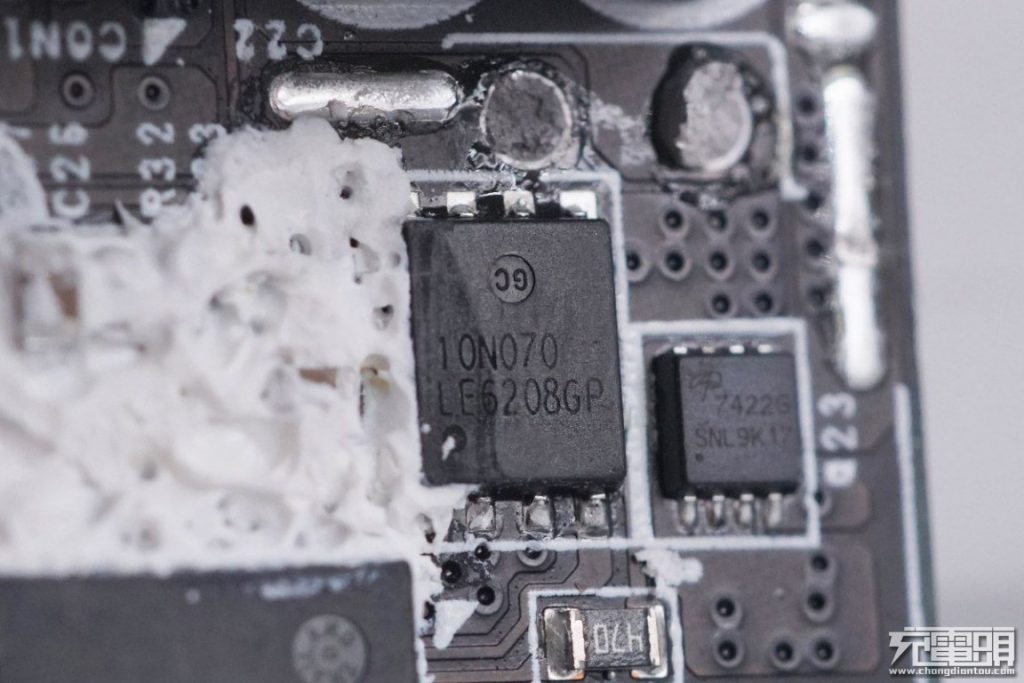
Next to the main controller chip is the secondary synchronous rectification MOSFET, with 10N070 marking.
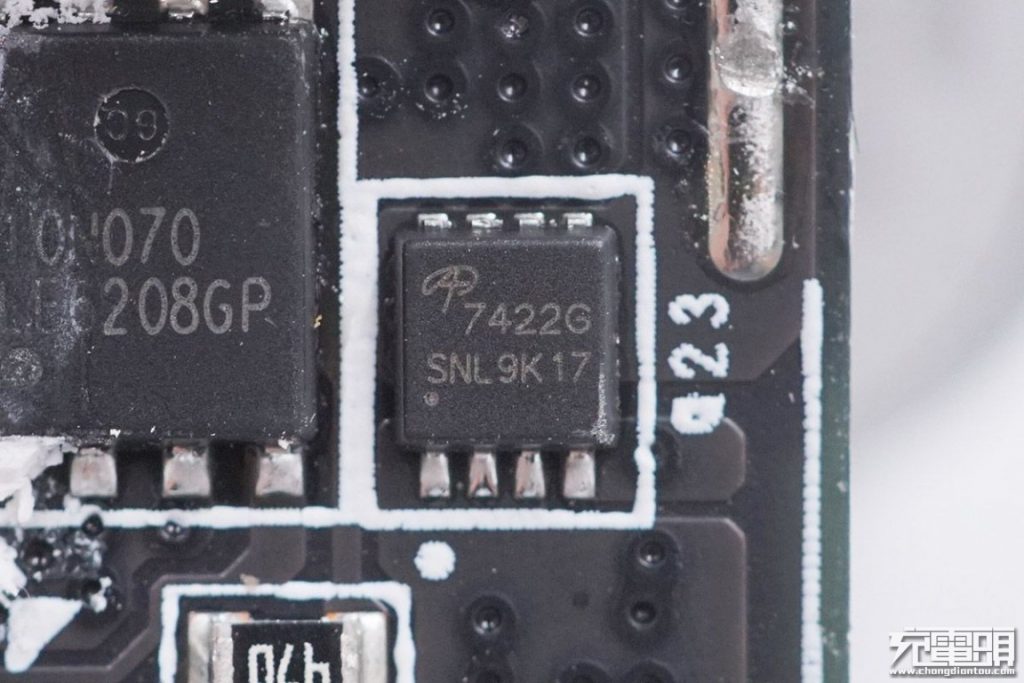
A VBUS switch for the USB-C port, AOS's AON7422G.
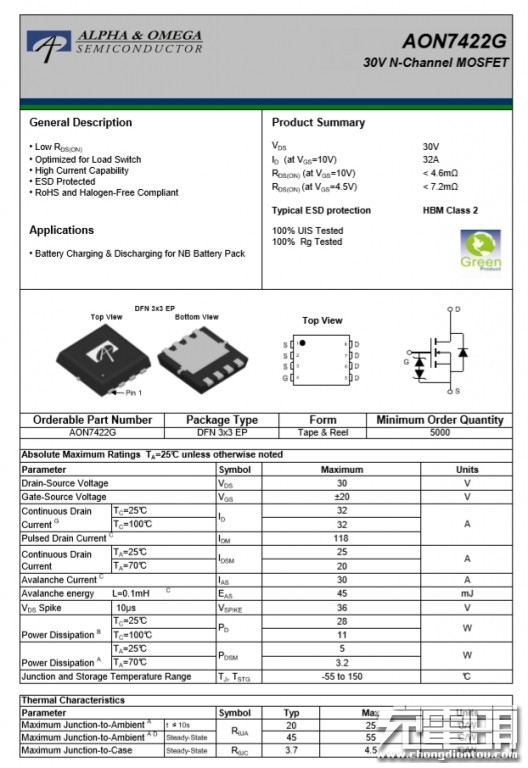
Detailed specifications of the AOS AON7422G.
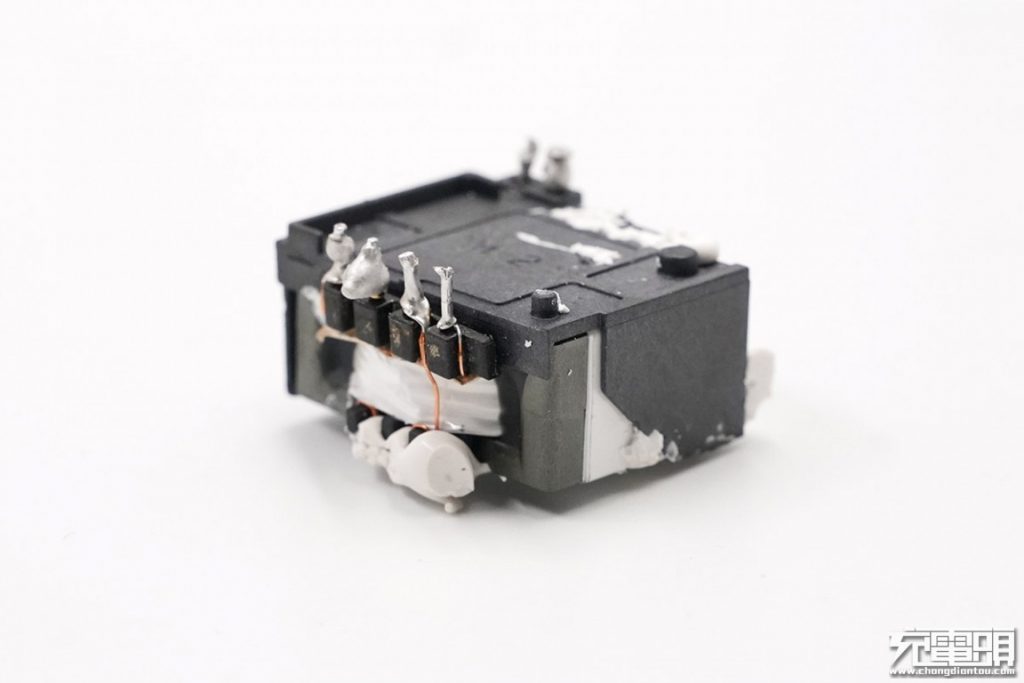
The charger's transformer is fixed with a plastic skeleton. It felt dense and looks like a planar transformer like we found inside Samsung's TA800 PD charger, but it is actually a conventional transformer.
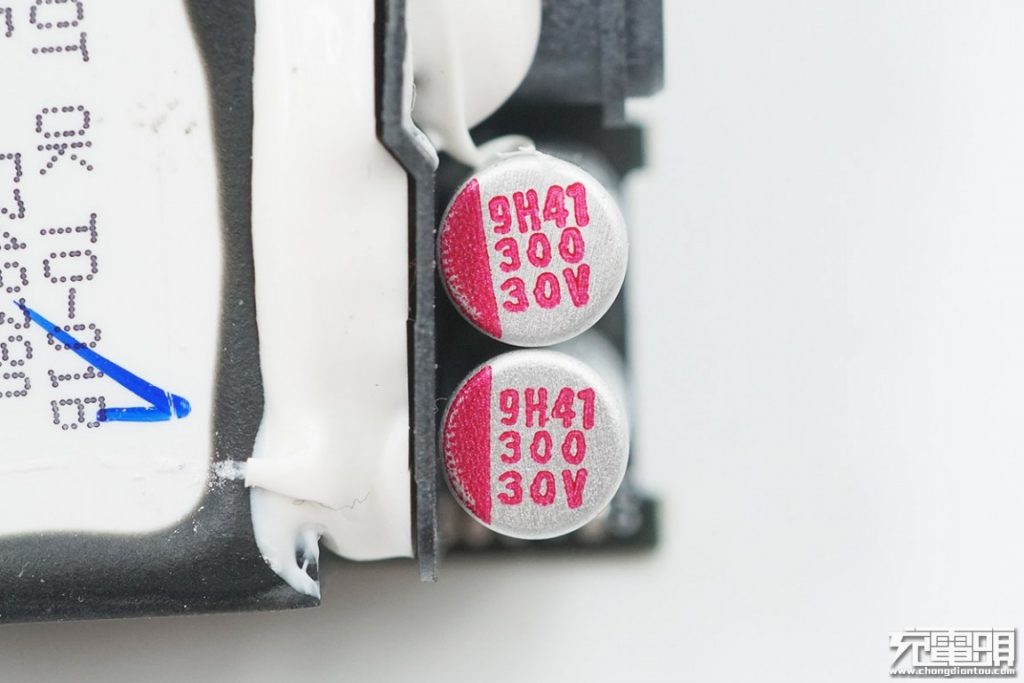
Two output filter solid capacitors, specifications are 300μF 30V, in slender form factor. It's the first time that we see the use of 30V-rated solid capacitors inside a 20V-capable charger (most of them use 25V solid capacitors).
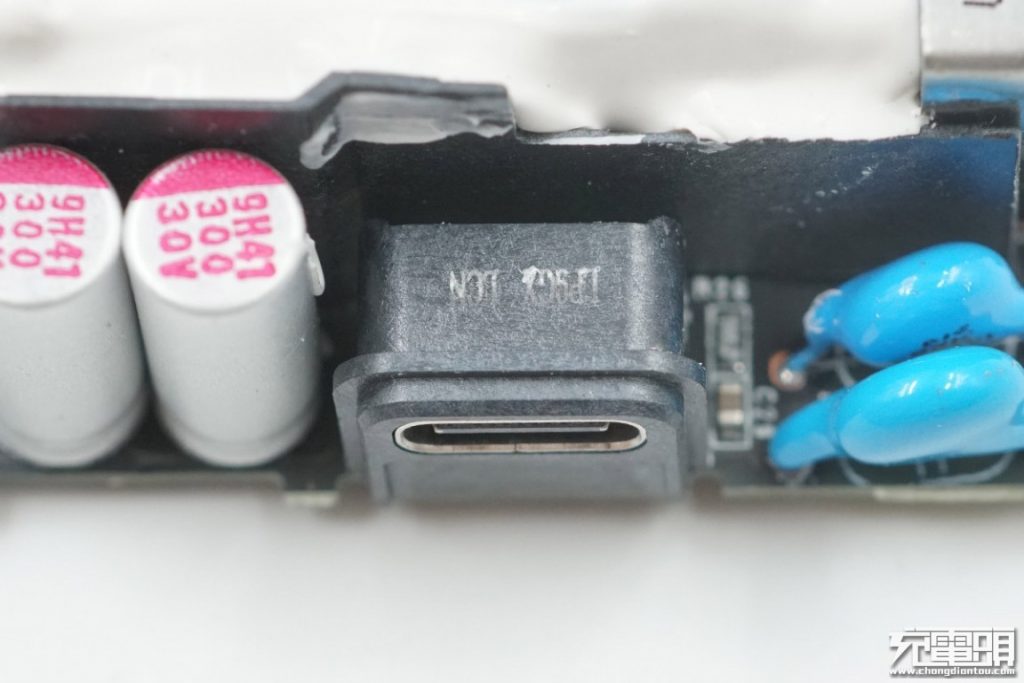
Close-up of the USB-C port.
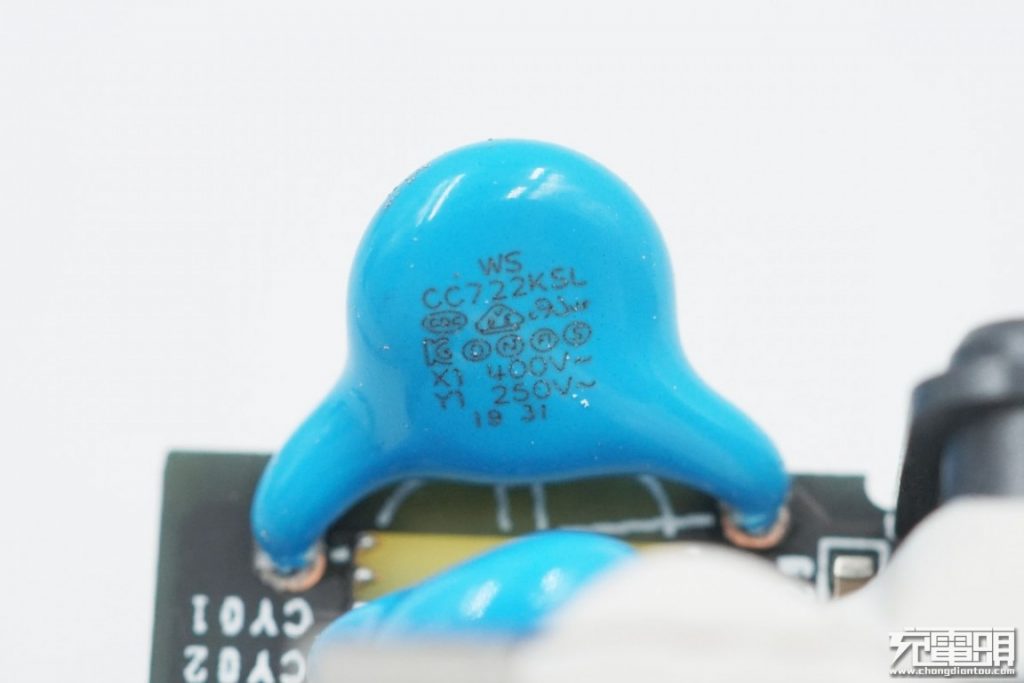
A blue Y capacitor for interference suppression.
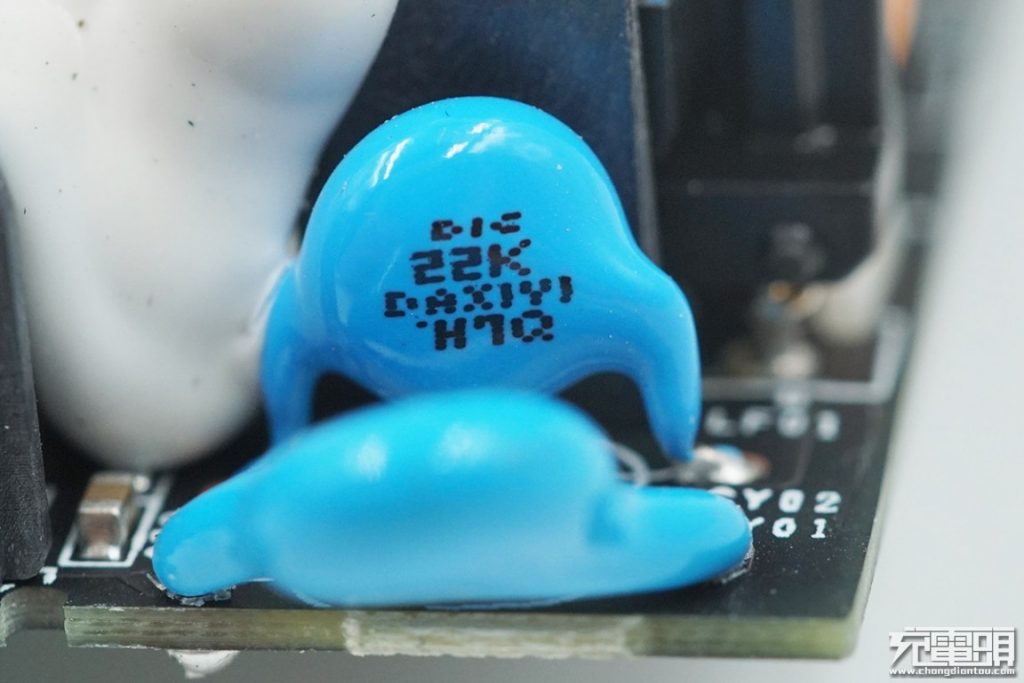
Another blue Y capacitor.
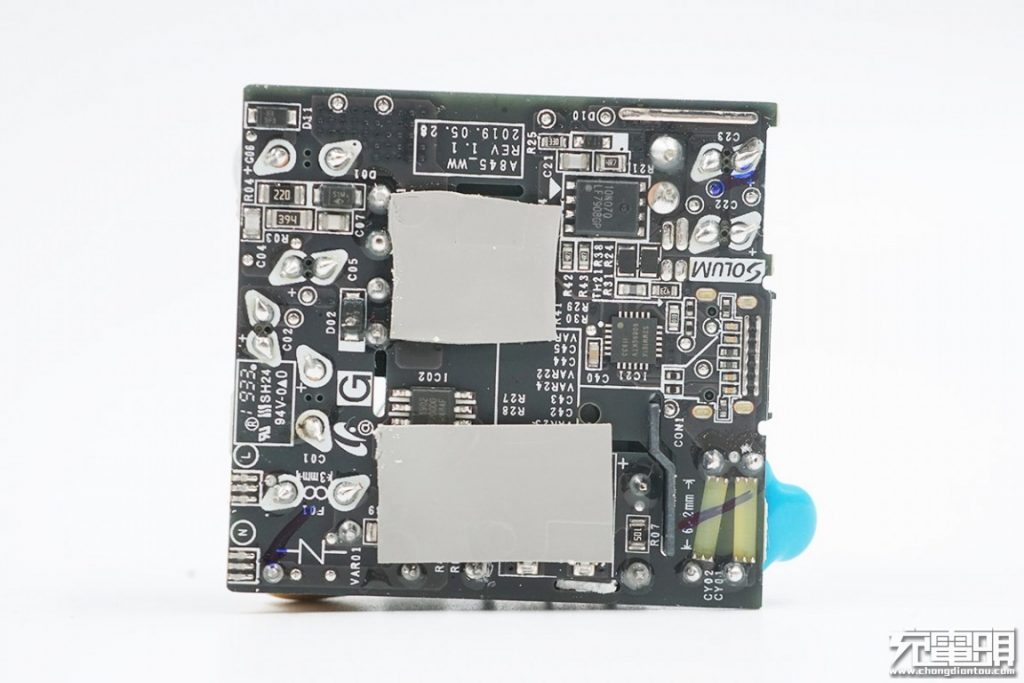
Taking a look at the backside. We have two thermal pads to cool the heat-generating components.
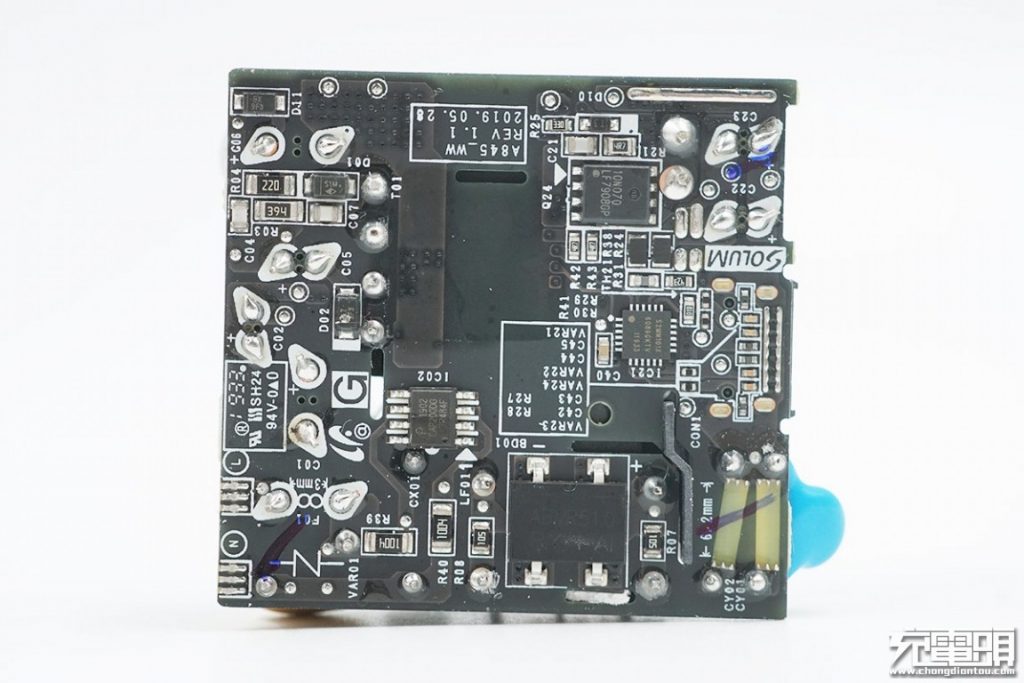
Remove the thermal pads, we can see that a relatively large area has been left out between the primary side on the left side and the secondary side for safety.
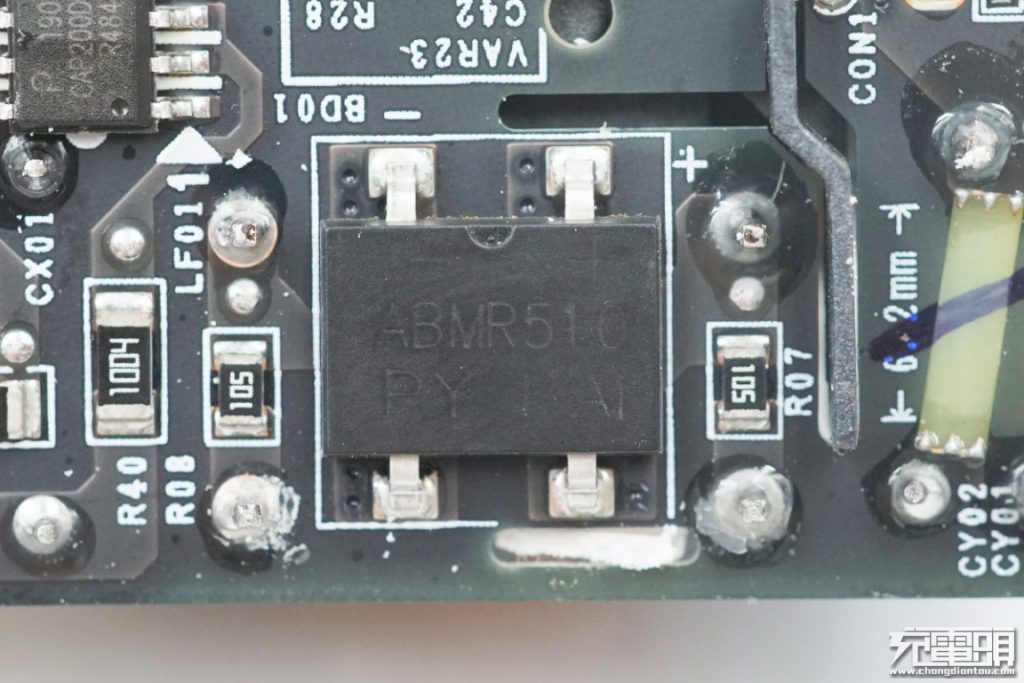
ABMR510 rectifier bridge at the input part of the primary side .
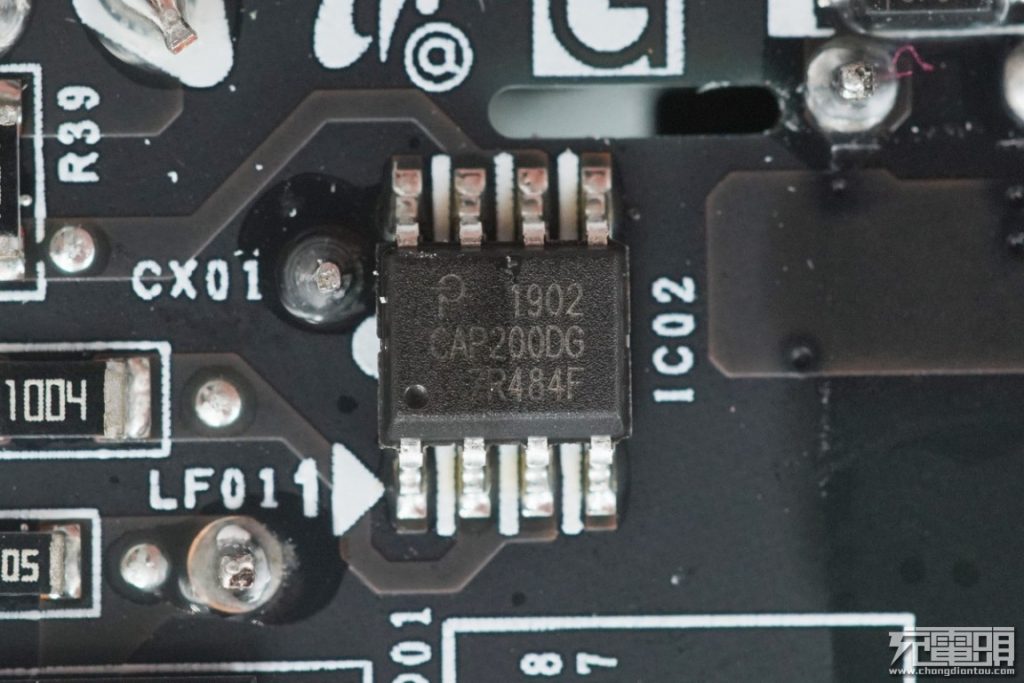
The PI X capacitor discharge chip CAP200DG can discharge the X capacitor through the discharge resistor after disconnecting the AC power, avoiding the power consumption of the X capacitor discharge resistor. Its built-in 1000V MOSFET has only two terminals, and offers high reliability and ease of use. It can effectively improve the energy efficiency of a charger.
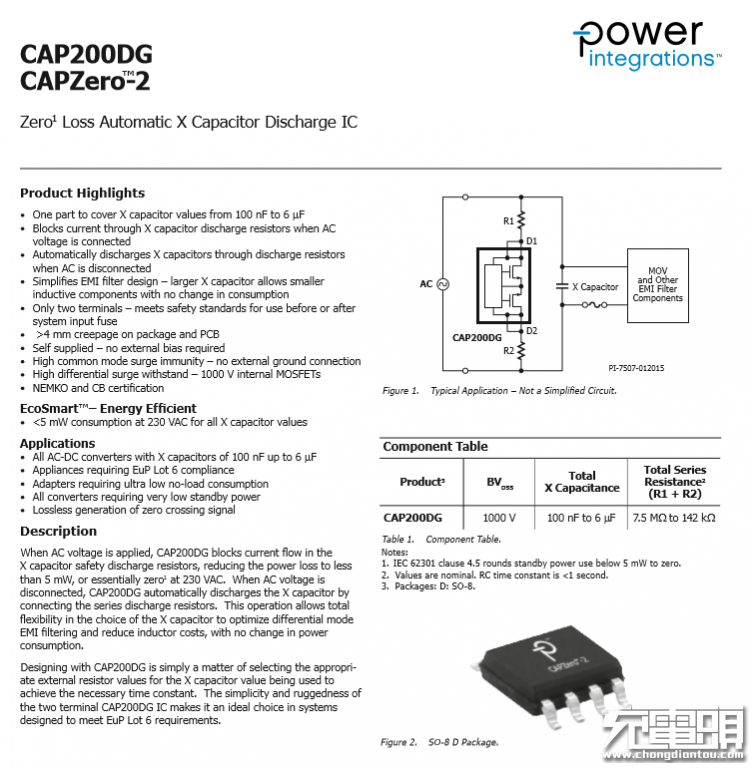
Detailed specifications of the PI CAP200DG.
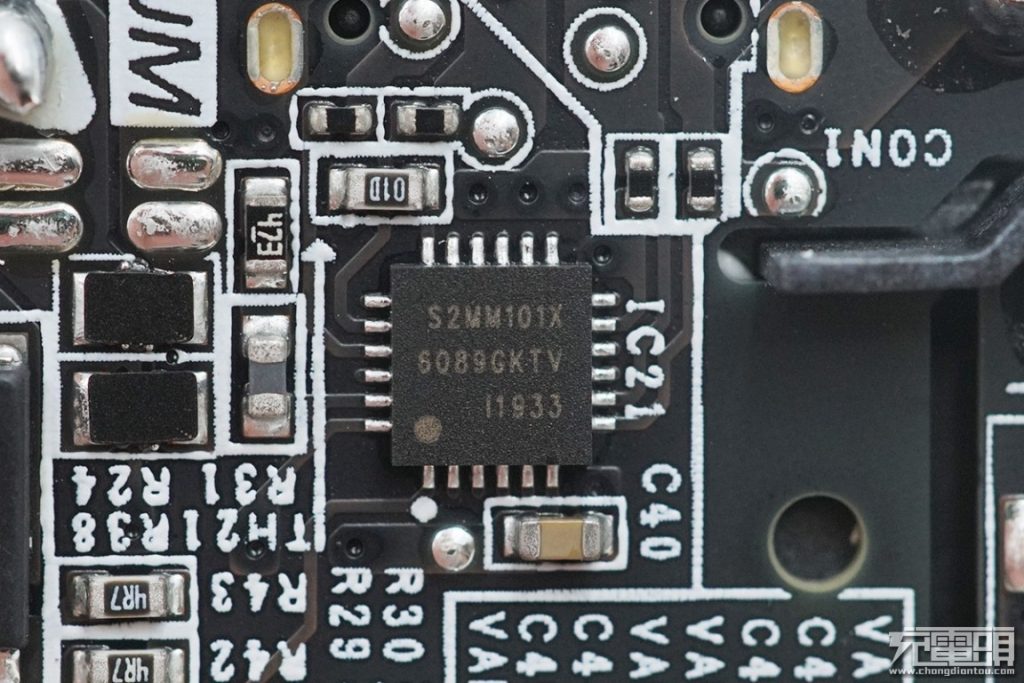
Samsung's own MM101 series of protocol IC. Here's our coverage on this chip in May this year. There is a thermistor on the left side of the chip for temperature detection.
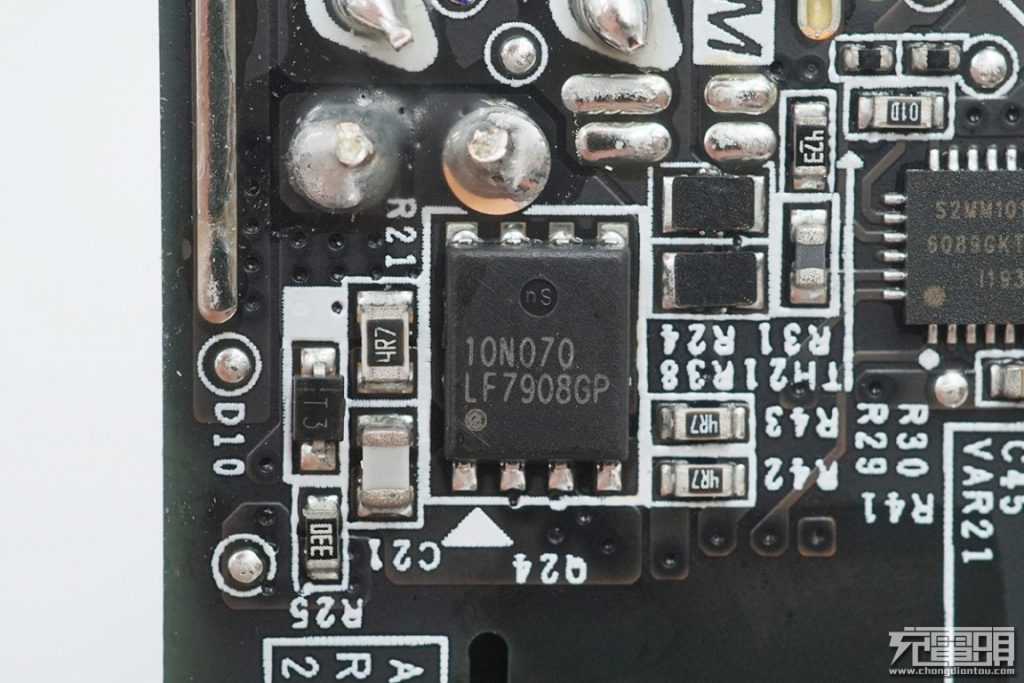
Next to the protocol chip is MOSFET with 10N07 marking.
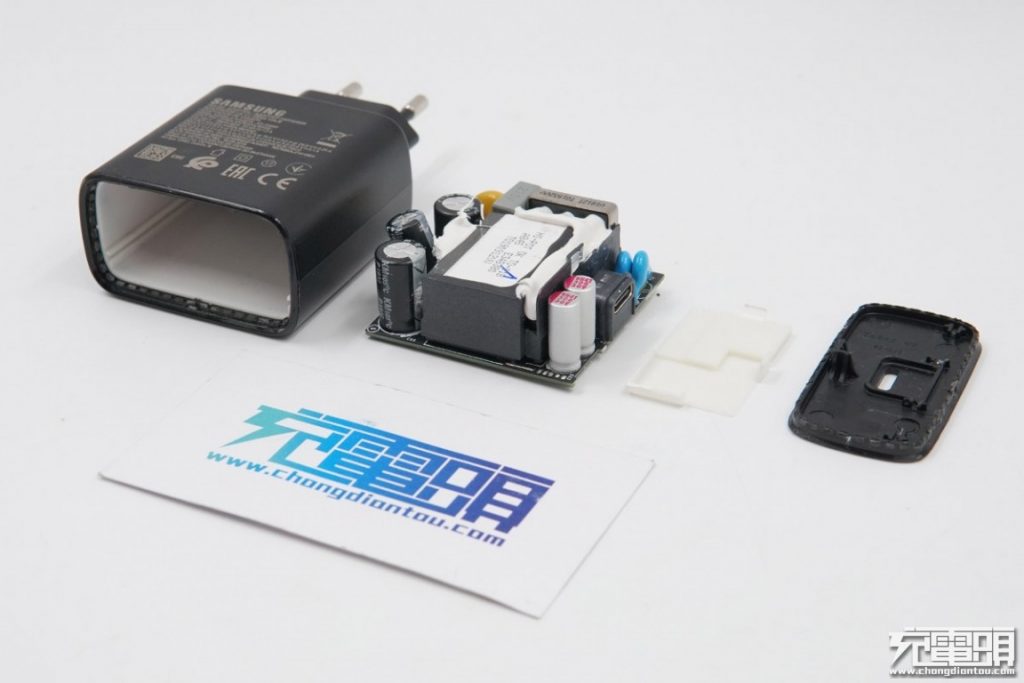
All the components.
III Conclusion
Don't buy the TA845 just for faster charging for the Note10+. In fact the charging speed gain is insignificant compared to the 25W TA800 charger.
The core value of the TA845 is its most advanced USB-PD PPS support, making it the most future-proof charger today. You may argue Anker's PIQ3.0 charger with upcoming firmware upgradability might bring more possibilities, but that hasn't happened yet.
It has been two years since the release of the USB-PD 3.0 PPS standard. And now, at the end of 2019, we still have countable numbers of PPS chargers on the market. Overpriced as the TA845 is, we sincerely hope the industry could move to PPS at a faster pace.
For internals, the charger continues the use of high quality components and attention of detail of Samsung. But for $50, Apple still stays in its own league for its all around use of top-notch components.
With PPS (Programmable Power Supply) coming to maturity, GaN (Gallium Nitride) bringing efficiency and density to new heights, and charger firmware upgradability in a possible future, we are now in the best time since the invention of switch mode power supply.
Pros:
Future-proof spec and performance.
High quality components and thoughtful design.
Cons:
Overpriced.
Source: chongdiantou

